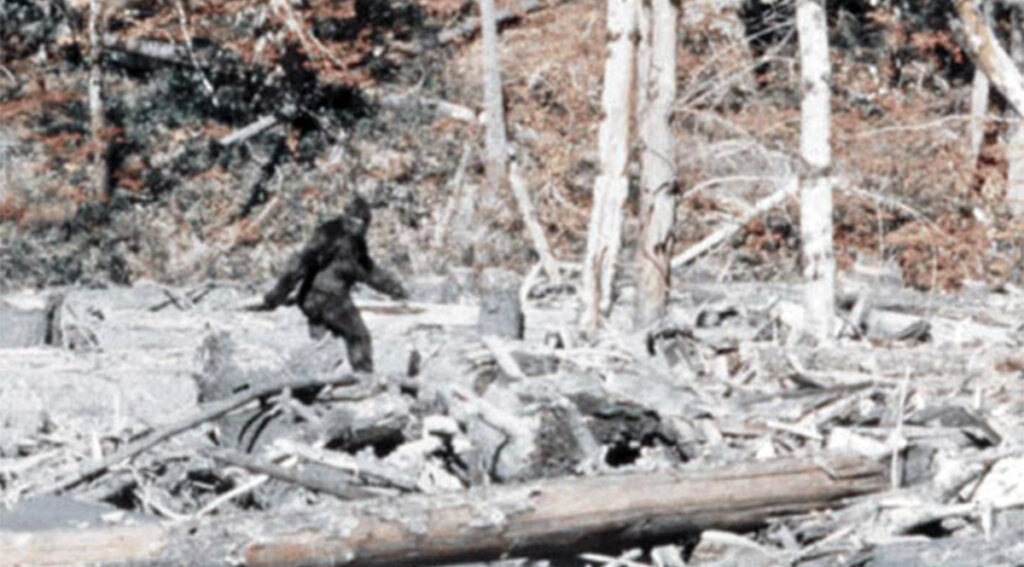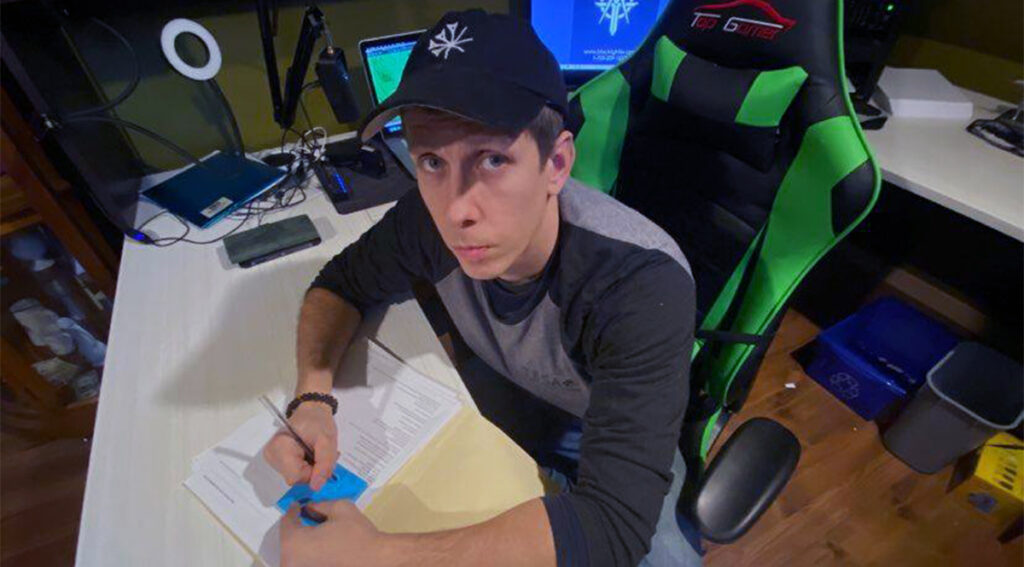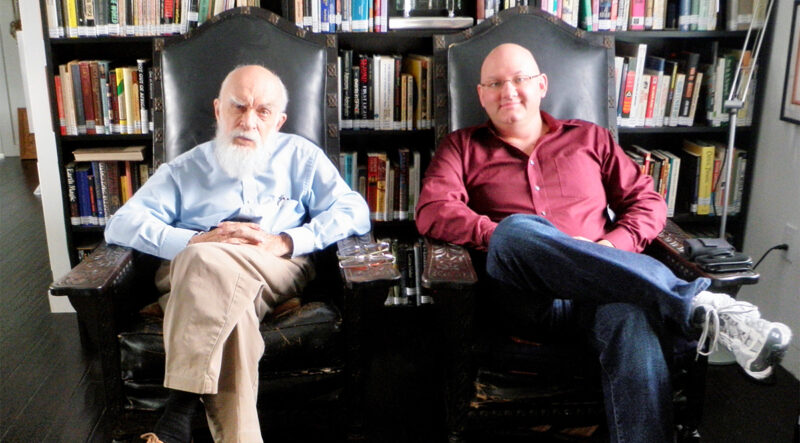When it comes to paranormal investigation, those with a critical eye perceive the field as being rather populist and not answering to the same scientific theories as academia.
This can lend itself to inaccurate data, and oftentimes, as in the case of the Surgeon’s Nessie photo, or the Fox Sisters, or even the Feejee Mermaid, hoaxes.
Benjamin Radford is one of those critical eyes and he often finds himself under the burning stare of believers during conferences.
The deputy editor of Skeptical Inquirer, as well as multiple hat-wearer within the skeptics’ community, has a deep interest in the preternatural, however, with it being so accessible to the greater public, there is a risk that proper scientific theory will not be followed.
“First of all, we need to try to tease this out and bring some intellectual rigour to parsing out what is good and what is not,” he said, in a February Zoom conversation from Albuquerque, N.M. “That’s one of the key problems. You have people who are well-meaning, intelligent and sincere — they’re good people (and) they’re not ignorant — they just don’t recognize the need for a foundational basis upon which to evaluate evidence.”
What’s happened, Radford added, was the democratization of paranormal investigators, in particular those who pursue ghosts.
“My genuine concern, whether they recognize it or not, is that the enormous amount of time and effort that is being wasted on not doing good work,” he said. “My point has always been, just do good research; just improve the quality of work.”
Science isn’t always right, he added, but it does have self-correcting mechanisms. Research is always performed, published and set up for peer review. If the data is poor, it will be buried or retracted but when it comes to the paranormal field of study, there isn’t that same level of quality control.
Radford points to the work of British Columbian cryptozoologist, John Kirk, as a rare breed in a field of unsubstantiated animals. Rare meaning Kirk follows proper investigative principles.
Finger-pointing aside

A former law enforcement professional, Kirk is the lead field investigator and chairman of the British Columbia Scientific Cryptozoology Club. He’s seen a lot of fraud on both sides of the investigative fence, in particular when it comes to Sasquatch.
“We’ve had a lot of attention seekers and publicity hounds out here in B.C. over the years and each time that this has happened, we’ve hung them out to dry,” he said, in a February phone conversation.
Every time someone has made false claims, or presented findings without data, the BCSCC will allow the investigators to say that they may have gotten their information wrong.
“We don’t do any sort of finger-pointing or any nasty stuff to anybody, but suffice it to say, we have always published our results in the different forums where these claims are being made or we’ve made them public,” he said, adding his law enforcement experience has allowed him to vet the fraudsters through simple human observation.
Examples of their research being released to the public include an investigation of the Cadborosaurus in 2019, as well as offering insight into another aquatic cryptid in Barrie, Ont., Kempenfelt Kelly.
By repeating the same question several times during a line of questioning, discrepancies are uncovered. The same can be said when trying to determine whether or not the evidence presented is falsified or hoaxed.
“The other thing that is absolutely deadly is the falsification of evidence,” Kirk said, adding there are two things Sasquatch hoaxers, in particular, can do: falsify tracks on the ground or falsify castings that are purported to belong to Sasquatch.
Kirk and his team look for evidence of twisting, turning, maneuvering in the ground. They pay close attention to soil composition and can determine rather quickly if it’s just a plaster cast being used.
Just as people are champing at the bit to create evidence to support their Bigfoot theories, some people are also trying to tarnish evidence that has been purported as strong.
The Patterson-Gimlin video, which has been scrutinized since its recording on Oct. 20, 1967, has been subject to people claiming that they were in a Bigfoot costume walking across the canyon at Bluff Creek.
“They take credit for something that somebody else has done and put a full spin on it, like the man in the suit thing,” Kirk said. “It’s not only appalling and abominable, but it’s also unforgivable, as far as I’m concerned.
“That you would take credit for something that somebody else did, and the besmudge their name by claiming that what you did was false and therefore they were complicit in your activity,” he added. “I’m sorry, mate, if you pull a stunt like that, you deserve to be shot down in flames.”
Kirk is close friends with Bob Gimlin, who witnessed the biped walking while Roger Patterson filmed, and false allegations drive him “stark raving mad.” Kirk and his team expose hoaxers and are vociferous in their efforts.
“Nobody in 1967 had the technology to make a costume like that,” Kirk said. “You cannot see muscle movement under the fabric and hairs of a costume. You can only see muscle movement if the hairs of the costume are glued to the individual.”
Gimlin, now 89, has only opened up about the experience in the last 15 years, but his story has been consistent, and he has expressed fear in sharing his story.
Aside from false claims and hoaxes, one line of thinking that has given Kirk amusement is those who tie Sasquatch to UFOs.
“It’s hilarious to me that we haven’t even established the order of things of where Sasquatch stand, as far as nature is concerned,” he said. “Then you have these people who want to take it several degrees to insane-land and say there’s a Sasquatch-UFO connection.
“The examples that I’ve seen and read are tenuous at best.”
British Columbia is rife with both Sasquatch and UFO sightings and also has large portions of land that are not inhabited by humans.
Finding the truth

Private investigator and business owner Ryan Stacey has utilized his business practices to investigate the inexplicable.
Move back east to Ontario, and you’ll find UFO investigator Ryan Stacey, who uses his private investigation and security services firm Black Light to investigate extraordinary claims.
The Penetanguishene native launched the Experiencer Support Association to help those who suspect they have had close encounters with extraterrestrials. But what makes Stacey’s organization unique is the option of reporting fraudulent activity through TESA’s website.
“We’re taking that legal approach towards finding out what’s going on. We don’t believe in the phenomenon when we’re investigating, we’re just investigating them as any police officer would,” he said, in a February phone conversation.
The impetus for such investigative work, into the backgrounds of some individuals within the paranormal community, was the entertainment aspect.
“Within this mess, within the entertainment side of the industry, some people have caught on that it’s very easy to tell a story and sell it because it makes money and it becomes a business,” Stacey said. “There are people doing this for the money, and that’s fine, but that’s not good for the evidence. It’s not good for the research. And it’s not good for the people.”
The fraud request form that’s on TESA’s website is for individuals who feel they are being taken advantage of. If a report comes in that there is fraudulent activity, Black Light, being a licensed firm, has to act on legal grounds.
Stacey used the example of a medium charging for a reading on the dead. His team would look into the context of how the business exchange happened.
“So, if it’s like, ‘I can guarantee you that I’m talking to your loved ones,’ you’re taking that risk, based on your beliefs. But if it’s, ‘I have the answers to what you’re looking for, but you’ve got to pay me this much money before I tell you first,’ that could be easily manipulated and turned into fraud because I would be questioning them, ‘How can you guarantee the results?’”
TESA is capable of “sniffing out” the fraudsters, but they are depending on the public to bring it to their attention, akin to the Crimestoppers model.
Stacey does not downplay his seriousness when approaching the preternatural.
“We don’t want to come in and say that everybody’s bad,” he said. “We want to come in and say we’re available to look into it because we want a proper assessment of what’s going on.
It is an effort to police the UFO and paranormal community; who’s legitimately providing credible information.
For Radford it all comes down to an organization investigating ghosts, cryptids and UFOs using scientific principles.
Which brings it back to the democratization of investigation note that Radford led off with.
Humans looking for answers to ghosts and hauntings has been commonplace over the last 150 years. But since the 1980s, and the glut of television shows dedicated to the paranormal, there has been a sense of anyone being able to do paranormal research.
He pointed to “Ghost Hunters” as being an example.
“The whole point of the show is these two plumbers — when they’re not fixing your toilet — they’re hunting for ghosts,” he said, with a light-hearted chuckle. “The message here to the audience is, ‘Hey, you don’t need to be an egghead scientist. You don’t need to know things and need to have any numbers and letters behind your name. Anybody can do this, and that’s really the populist appeal.”
Photo of James Randi and Ben Radford courtesy of Ben Radford.

